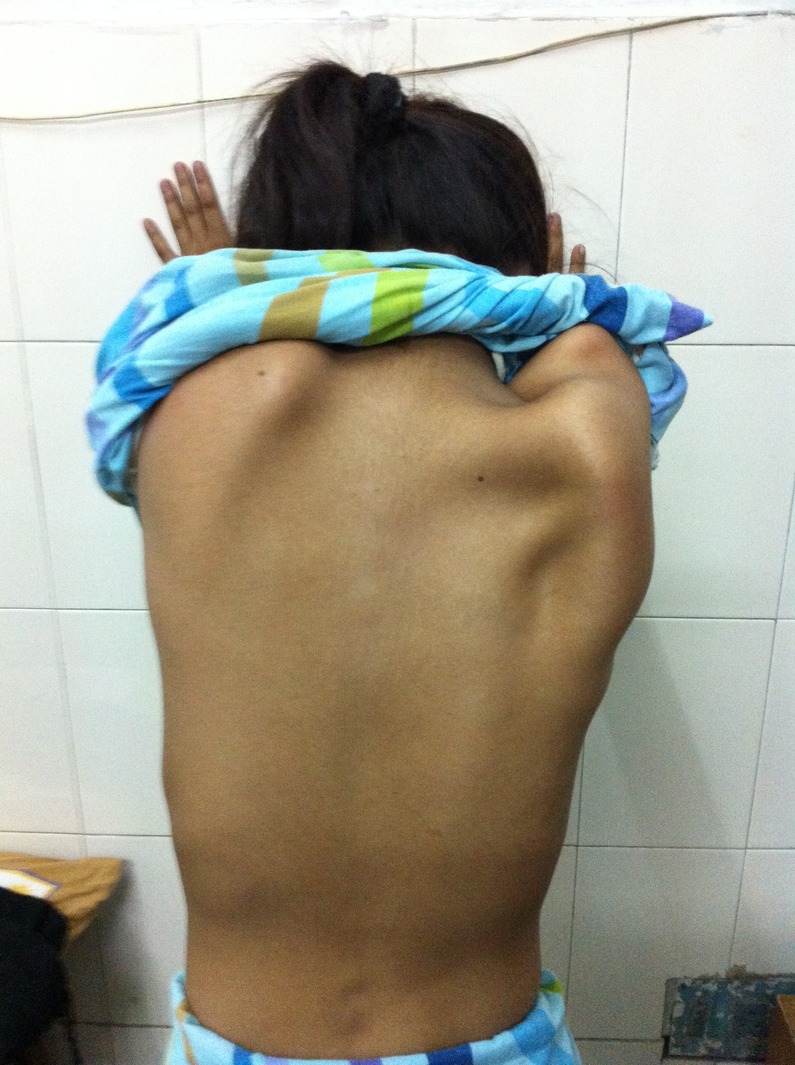Description
The Beevor's sign is one of the classic neurological learning signs taught to medical students. It is elicited by asking a supine patient to attempt to get up by raising the head and keeping the arms crossed over the chest, while a marker (a clinical hammer) is kept at the level of the umbilicus to detect the movement of the umbilicus. A positive Beevor's sign is the upward movement of the umbilicus due to cephalad pull of upper abdominal muscles when a patient attempts to raise the head from the supine position. It signifies lower abdominal muscle weakness and has been traditionally described in dorsal myelopathy at D-10 spinal cord level.
Facioscapulohumeral muscular dystrophy (FSHMD) is the third most common muscular dystrophy (after Duchenne and myotonic dystrophy) with an estimated prevalence of 1:20 000. There is usually a distinctive descending evolution of weakness and wasting involving the facial, scapular, humeral, truncal and finally anterolateral leg and pelvic girdle muscles in majority of affected individuals. Classically, the distribution of weakness is symmetrical, as noted in asymmetric scapular winging in our patient (figure 1). Also typical is the ‘Popeye’ arms due to atrophy of biceps–triceps and selective preservation of deltoid and forearm muscles.
Figure 1.

Asymmetric winging of the scapula.
A positive Beevor's sign has also been described in FSHMD due to preferential lower abdominal muscle weakness, with an almost 90% sensitivity and specificity.1–3 In FSHMD, it signifies the differential muscle involvement, so characteristic of all the muscular dystrophies. Here, we demonstrate the positive Beevor's sign in a 16-year-old girl with FSHMD video 1). This clinical sign may be particularly helpful in identifying FSHMD cases presenting with scapulohumeral weakness, but without facial muscle weakness.
In sequential order: (A) Asymmetry of nasolabial folds on being asked to show the teeth (B) incomplete eyelash burrowing on attempted forceful eye closure signifying orbicularis oculi weakness (C) Positive Beevor's sign
Learning points.
A positive Beevor's sign is the cephalad movement of the umbilicus when a supine patient attempts to raise the head to get up.
Two important causes of a positive Beevor's sign are (1) dorsal spinal cord pathology at D-10 spinal level and (2) facioscapulohumeral muscular dystrophy (FSHMD).
In FSHMD, a positive Beevor's sign is helpful in clinically identifying cases presenting with scapulohumeral weakness without facial muscle weakness.
Footnotes
Contributors: CS, MA, BLK and KN contributed to the planning, conduct and reporting of the work described in the article. All authors read and approved the final manuscript. CS is the guarantor.
Competing interests: None.
Patient consent: Obtained.
Provenance and peer review: Not commissioned; externally peer reviewed.
References
- 1.Eger K, Jordan B, Habermann S, et al. Beevor's sign in facioscapulohumeral muscular dystrophy: an old sign with new implications. J Neurol 2010;257:436–8 [DOI] [PubMed] [Google Scholar]
- 2.Shahrizaila N, Wills AJ. Significance of Beevor's sign in facioscapulohumeral dystrophy and other neuromuscular diseases. J Neurol Neurosurg Psychiatry 2005;76:869–70 [DOI] [PMC free article] [PubMed] [Google Scholar]
- 3.Awerbuch GI, Nigro MA, Wishnow R. Beevor's sign and facioscapulohumeral dystrophy. Arch Neurol 1990;47:1208–9 [DOI] [PubMed] [Google Scholar]
Associated Data
This section collects any data citations, data availability statements, or supplementary materials included in this article.
Supplementary Materials
In sequential order: (A) Asymmetry of nasolabial folds on being asked to show the teeth (B) incomplete eyelash burrowing on attempted forceful eye closure signifying orbicularis oculi weakness (C) Positive Beevor's sign


